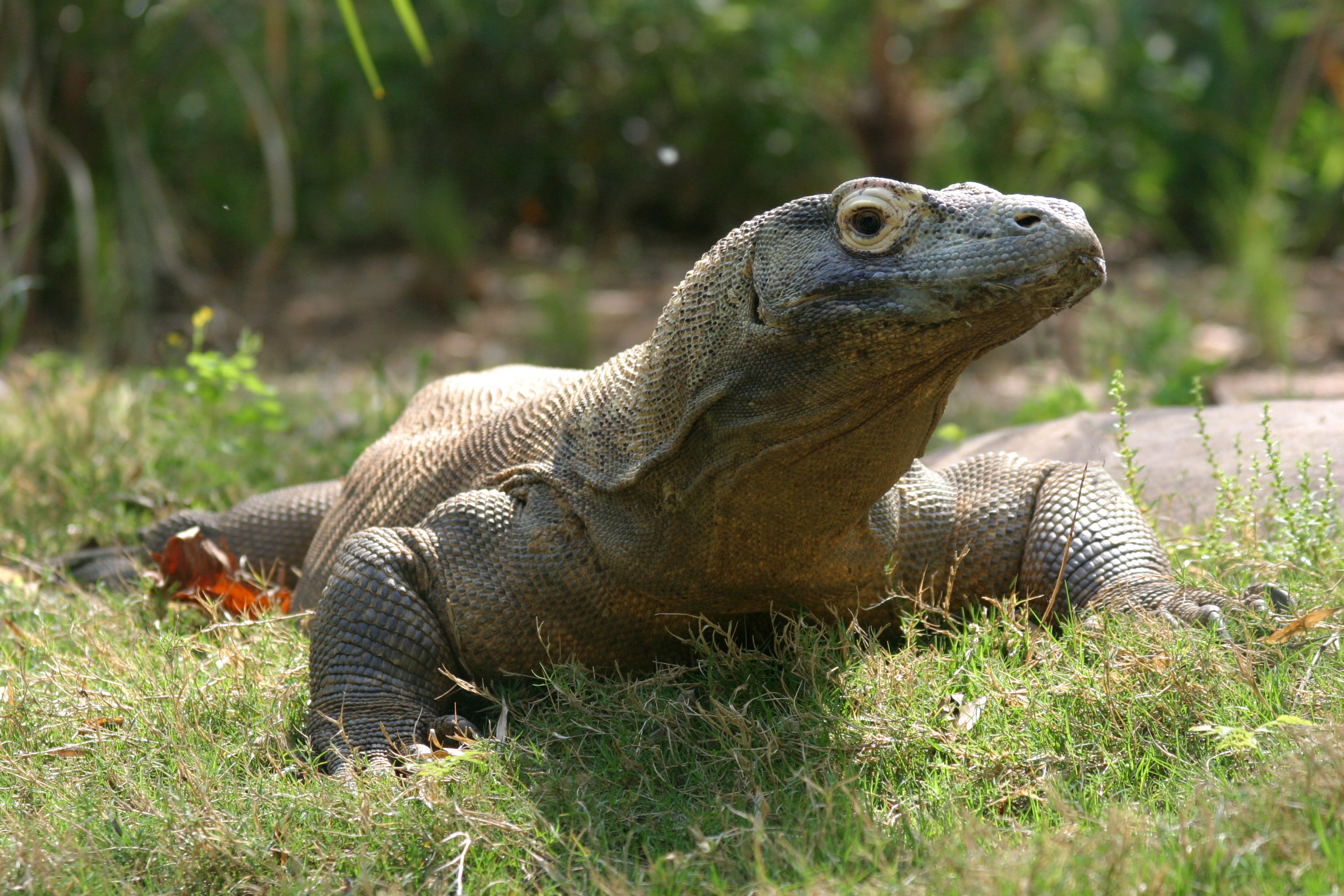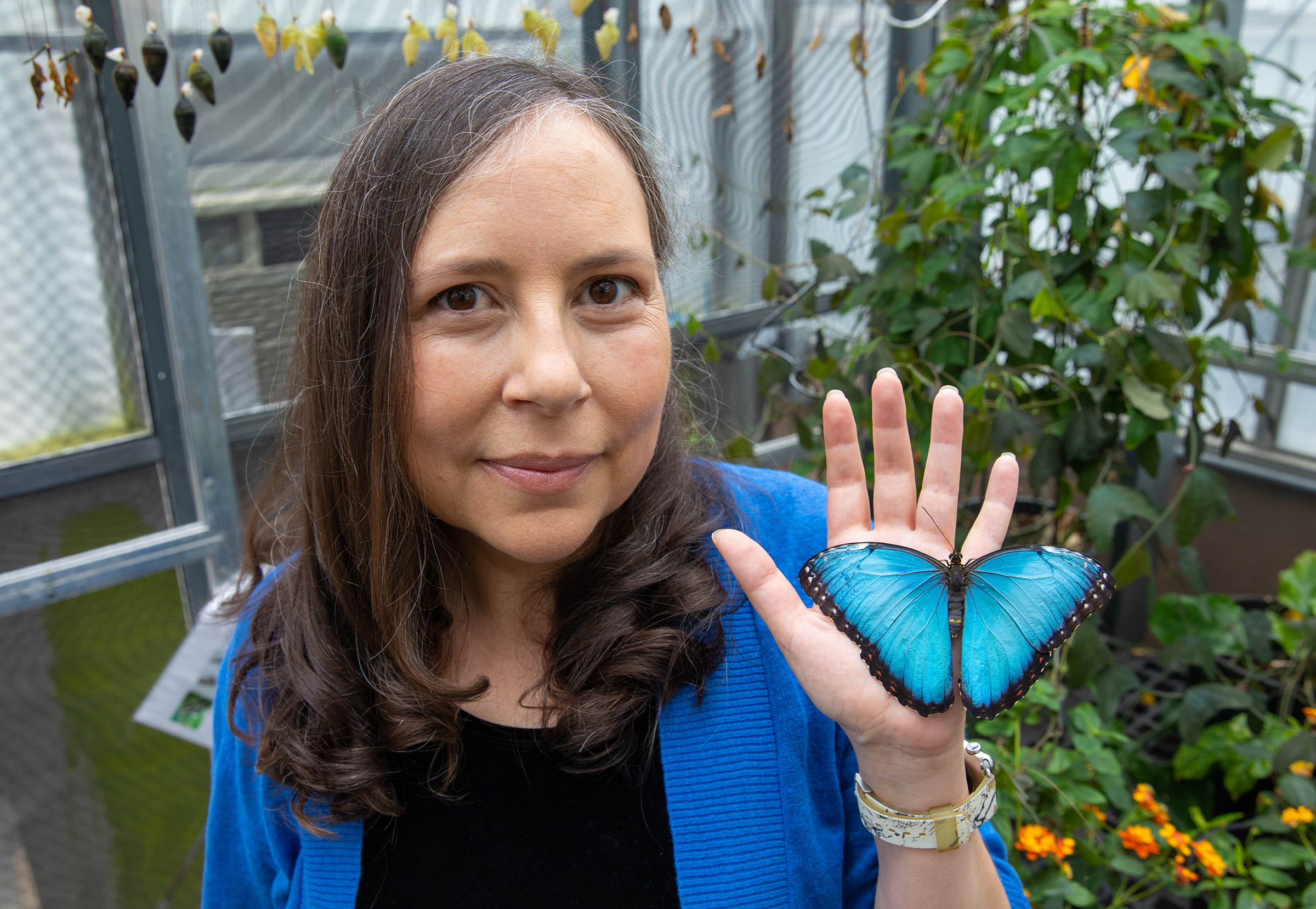UCI biologist part of team to sequence of the Komodo dragon genome
New study provides groundbreaking insights into the evolution of lizards

The Komodo dragons are the largest lizards in the world. These predators weighing up to 200 pounds can detect their prey from up to 7.5 miles away. And although they are cold-blooded, they can ramp up their metabolism to near mammalian levels, which gives them great speed and endurance. However, scientists have understood little about how the DNA of these remarkable lizards encodes such astounding characteristics.
Now, a new study from UCI biologist James Hicks and researchers at the Gladstone Institutes, in a close collaboration with scientists at UC San Francisco and Zoo Atlanta, provides the first high-resolution sequence of the Komodo dragon, as well as insight into how it evolved.
The study, which appears in Nature Ecology & Evolution, provides an extremely high-quality sequence of the Komodo dragon genome, which can now be used as a reference in efforts to sequence other vertebrate genomes. Once the scientists had the sequence, they used computational tools to compare it to that of other reptiles and see what makes the Komodo dragon genome unique.
Specifically, they were looking for changes in the genome that helped the Komodo dragon adapt to its environment, which have undergone an evolutionary process called positive selection. A remarkable finding was that positive selection has shaped several genes involved in the function of mitochondria, the energy powerhouses of the cell that control how well heart and other muscles function.
Their analysis showed that in Komodo dragons, many of the genes involved in how cells make and use energy had changed rapidly in ways that increase the lizard’s aerobic capacity. These changes are likely key to the Komodo’s ability to achieve near-mammalian metabolism.
Lizards are generally not known for their high aerobic capacity. In other words, they become exhausted quickly after physical exertions. However, Komodo dragons are capable of sustained aerobic activity, which could be swimming, running, or walking extremely long distances
Next, the researchers will use their findings to investigate how genes that control the formation of the vertebrate heart have changed over the course of evolution, as most reptiles have only a three-chambered heart, while mammals have four chambers.
The completed genome sequence also represents an invaluable resource for conservation biologists interested in tracking Komodo dragons to study their ecology, and for the many scientists across the world investigating vertebrate evolution.
“The mammalian-like physiology of these iconic reptiles has marveled biologists for decades,” said Hicks, professor and chair of ecology & evolutionary biology at UCI. “Comparative physiological studies of animals from the natural world often reveal unique physiological adaptations to their environments. This study on Komodo dragons provides a framework to compare other sequenced animals to reveal the genetic basis for how such characters have evolved.”
About the University of California, Irvine: Founded in 1965, UCI is the youngest member of the prestigious Association of American Universities. The campus has produced three Nobel laureates and is known for its academic achievement, premier research, innovation and anteater mascot. Led by Chancellor Howard Gillman, UCI has more than 36,000 students and offers 222 degree programs. It’s located in one of the world’s safest and most economically vibrant communities and is Orange County’s second-largest employer, contributing $5 billion annually to the local economy. For more on UCI, visit www.uci.edu.
Media access: Radio programs/stations may, for a fee, use an on-campus ISDN line to interview UCI faculty and experts, subject to availability and university approval. For more UCI news, visit wp.communications.uci.edu. Additional resources for journalists may be found at communications.uci.edu/for-journalists.



